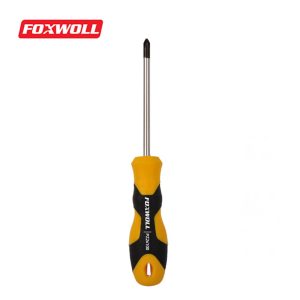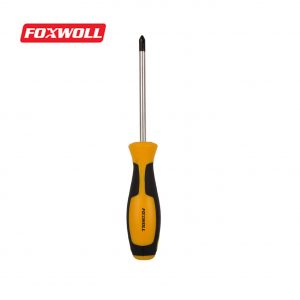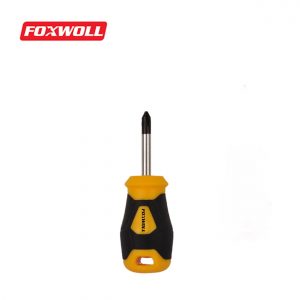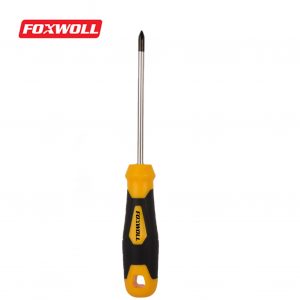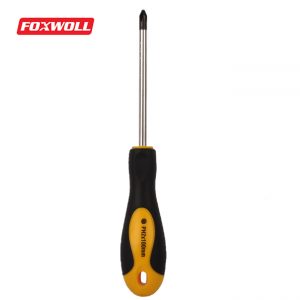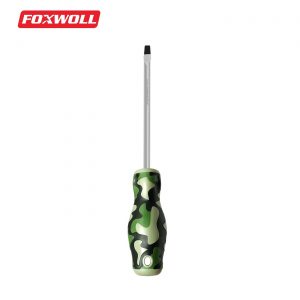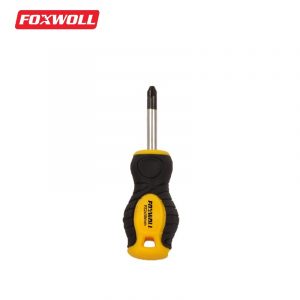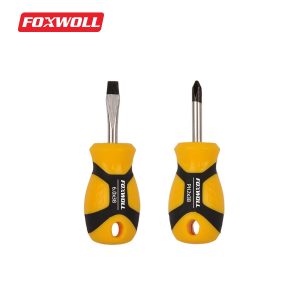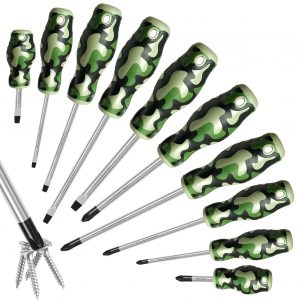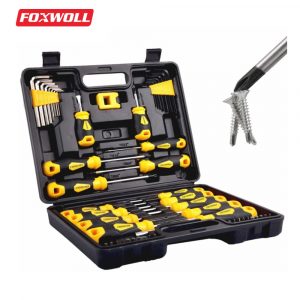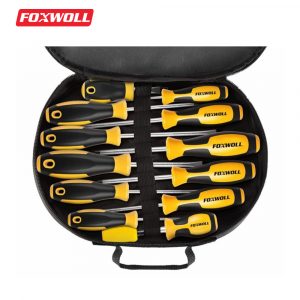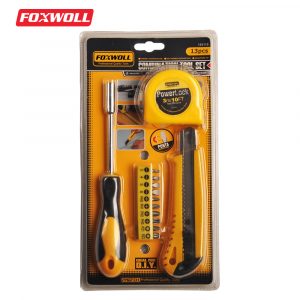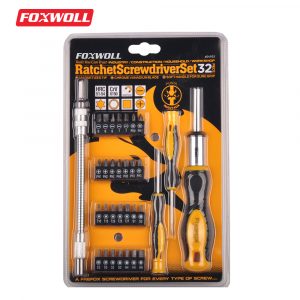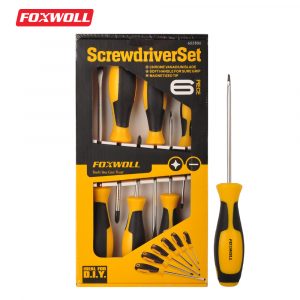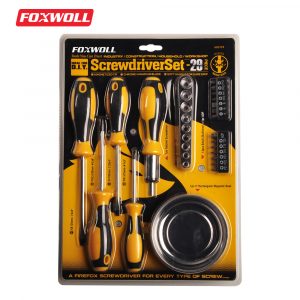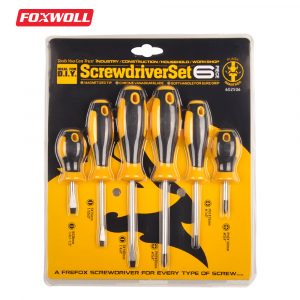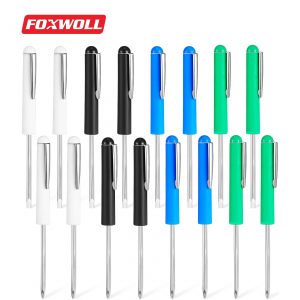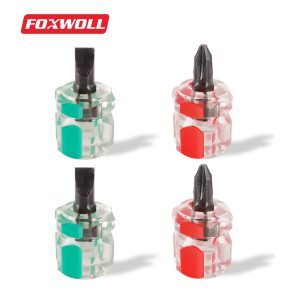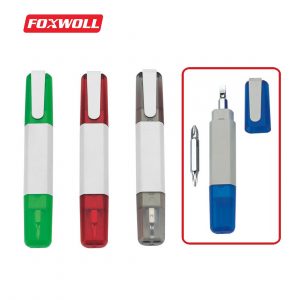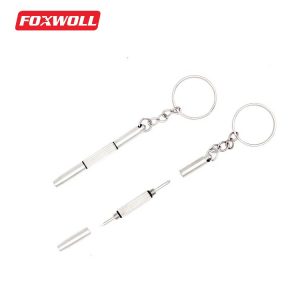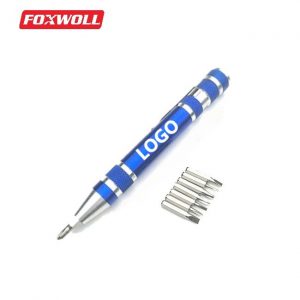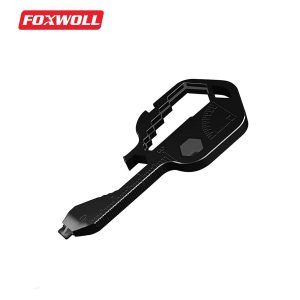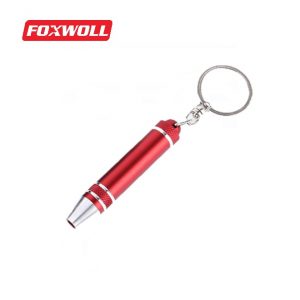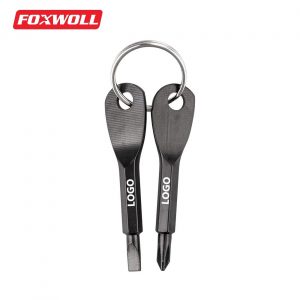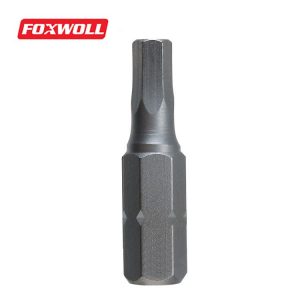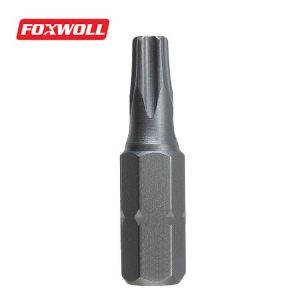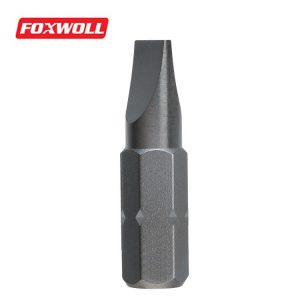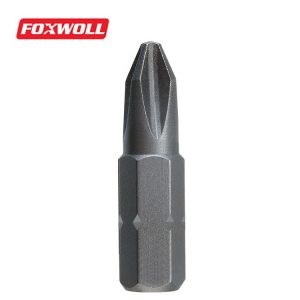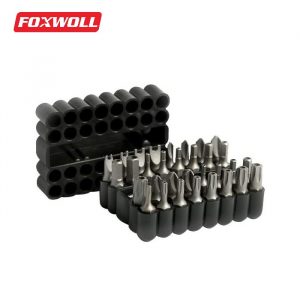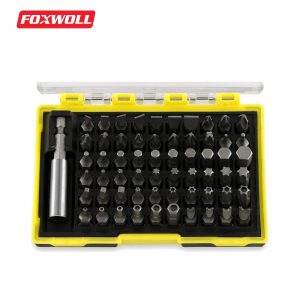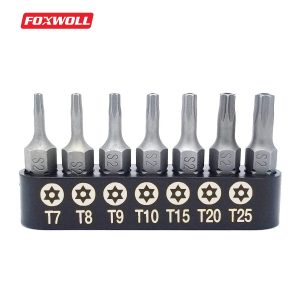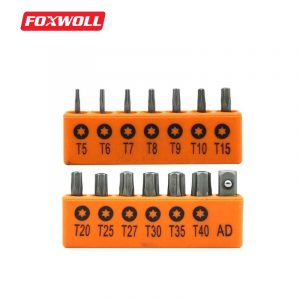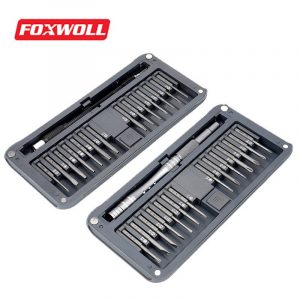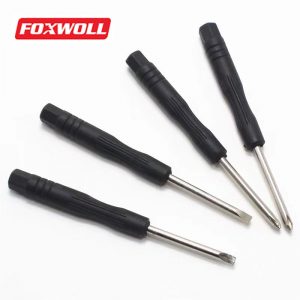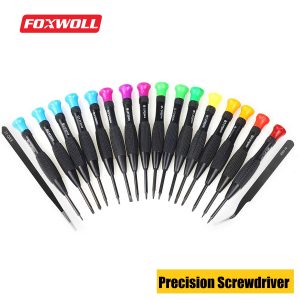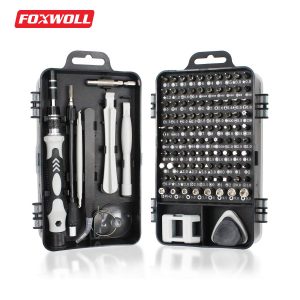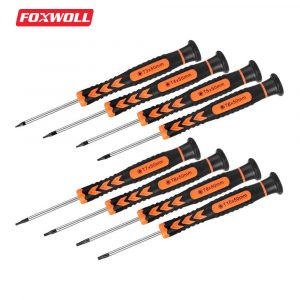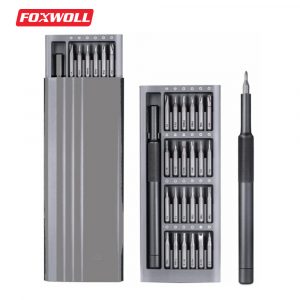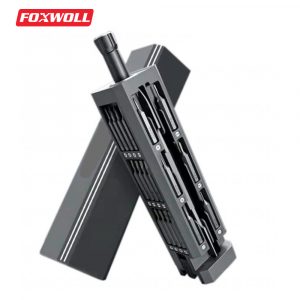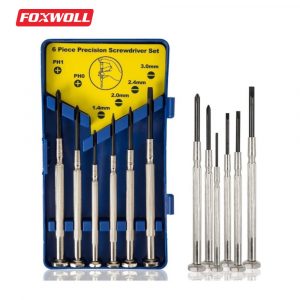China Screwdrivers Supplier
- Foxwoll tool provide screwdriver wholesale service with blade length of 38mm~150mm, with a different types of heads.
- Handles of screwdrivers with different styles and with high-quality blades, durable and nice appearance.
- The are more than 100 new products and sets launched every year according to market demand.
- As a screwdriver factory with 16 years of OEM screwdriver manufacturing experience, we supply you with professional customized products and services.
Get an Instant Quote
We typically reply within 3 hours.
One-Stop Screwdriver Service For Your Toolkit
Different tool combinations, different sizes and materials with cheap price, to meet a variety of application needs
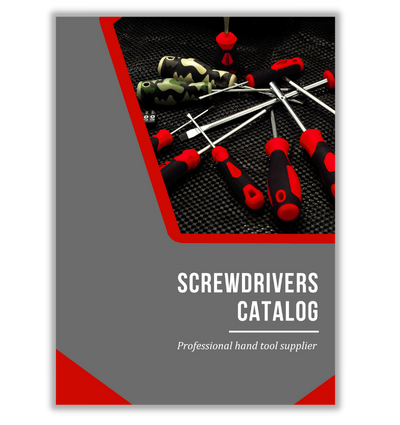
Can't Find The Screwdriver Or Tool Kit You Need?
Contact Us For The Latest Product Catalog
Your Best Quality Screwdriver Supplier and Manufacturer in China
Foxwoll tool is a comprehensive enterprise specializing in the production and manufacture of hand tools, and screwdrivers are our representative products.
We have a complete production chain from the procurement of raw materials to the mold opening production of the knife head handle and the engraved logo packaging.
Foxwoll has been exploring and developing screwdrivers for 16 years, with rich production experience, it can provide you with a complete set of solutions.
If you are interested in our products and solutions, please feel free to contact us.
As a professional manufacturer and supplier of Screwdrivers, we provide customized services to all our clients. The scope of customization includes materials, colors, handles, cutter heads, packaging and sets.
⭕Logo
Custom logo is the most common custom request.
1. Print logo on the handle
2. Engraving the logo on the blade
3. Print logo on the package
We can meet your requirements for logo customization, please send us the file of your logo, our designer will make a rendering, after getting your confirmation, we will start mass production.
⭕Tips
In the application of screwdrivers, the most common bit configurations are flat, cross and torx. The delivery time of screwdrivers equipped with these bits is usually 7~20 days.
In different industries, for different styles of screws, different shapes of cutter heads are required to work, such as triangular, square, two-point, hexagonal, etc.
If you need these bits, we will evaluate custom lead times for you.
⭕Color
The color customization we mentioned here means that the handle color of the screwdriver can be customized according to your requirements.
The color of the standard configuration is yellow + black. In color customization, red, blue, and green are more common.
You can tell us the color you need, we will evaluate and calculate the price for you.
⭕Combination set
Screwdriver sets account for a large proportion of screwdriver sales. Usually divided into screwdriver sets and screwdriver plus other hand tool combination sets.
For these two types of suits, we can customize according to your needs.
You can choose hand tools and screwdrivers of different specifications to combine into your unique set.
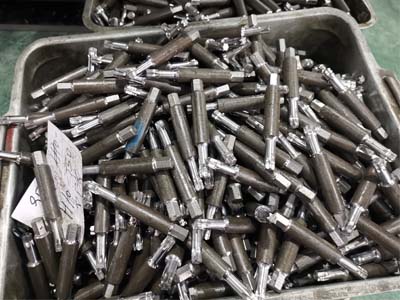
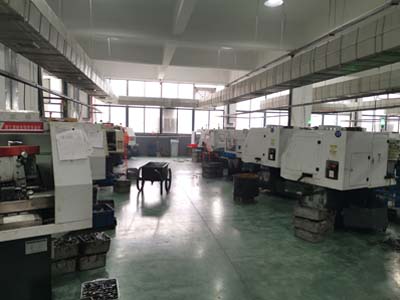
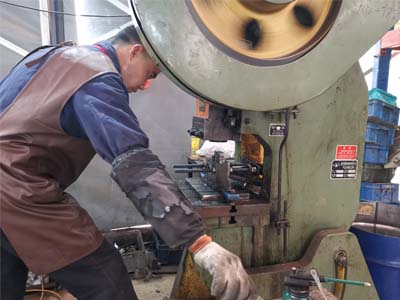
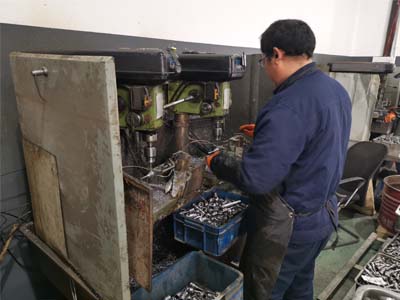

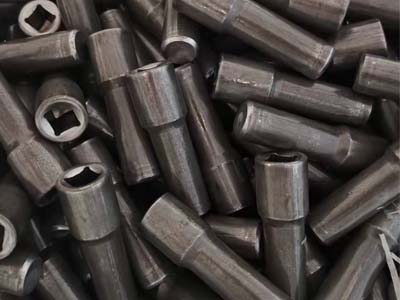
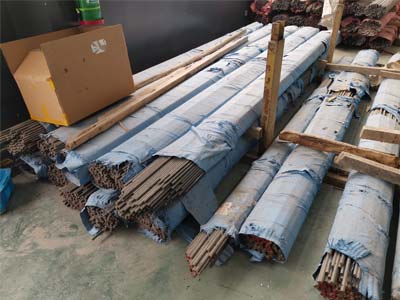
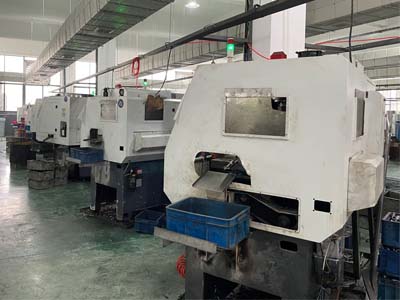
Screwdriver FAQ Guide
1. What is a screwdriver?
A screwdriver is a hand tool that is used to tighten or loosen screws. It consists of a handle and a shaft, with the shaft ending in a tip that matches the shape of the screw head. The handle provides grip and leverage for turning the screwdriver, while the tip engages with the screw head to apply torque. Screwdrivers come in various sizes and types, including flathead (slotted) screwdrivers, Phillips screwdrivers, and Torx screwdrivers, each designed to fit different types of screws. Whether you’re assembling furniture, repairing electronics, or working on DIY projects, a screwdriver is an essential tool that every toolbox should have.
2. What is the use of screwdriver?
A screwdriver is a versatile tool that is used for driving or removing screws. It consists of a handle and a shaft with a tip that matches the shape of the screw head. Screwdrivers come in various sizes and types, each designed for specific screw types and applications. They are commonly used in construction, woodworking, electronics, and many other industries. The primary purpose of a screwdriver is to tighten or loosen screws by applying torque to the screw head. Whether it’s assembling furniture, repairing appliances, or working on DIY projects, a screwdriver is an essential tool that provides the necessary leverage and control to complete tasks efficiently and effectively.
3. Why is it called a screwdriver?
The term “screwdriver” is believed to have originated from the tool’s original purpose of driving screws into various materials. The earliest versions of the screwdriver consisted of a simple handle and a flat blade that was inserted into the head of a screw, allowing for easy rotation and insertion. This motion resembled the action of turning a screw with a manual driver, hence the name “screwdriver.” Over time, the design and functionality of the screwdriver have evolved, with different types and sizes now available for various screw heads. Despite these advancements, the term “screwdriver” has remained consistent, serving as a testament to its historical origins and enduring usefulness in everyday tasks.
4. What do you call different screwdrivers?
Different screwdrivers are commonly referred to by their specific names based on their unique features and functions. Some of the most common types include flathead screwdrivers, Phillips screwdrivers, Torx screwdrivers, and Allen wrenches. A flathead screwdriver has a single flat blade that fits into a corresponding slot on a screw head. A Phillips screwdriver has a cross-shaped tip that fits into the cross-shaped recess on a Phillips screw head. Torx screwdrivers have a star-shaped tip and are used with screws that have a corresponding star-shaped recess. Allen wrenches, also known as hex keys, have a hexagonal-shaped tip and are used with screws or bolts that have a hexagonal socket. These different types of screwdrivers provide versatility and ensure compatibility with various types of screws, making them essential tools in any toolbox or workshop.
5. How many types of screwdrivers are there?
There are several different types of screwdrivers available, each designed for specific purposes and applications. Some of the most common types include flathead screwdrivers, Phillips screwdrivers, Torx screwdrivers, and Robertson screwdrivers. Flathead screwdrivers have a single flat blade that fits into the slot on the head of a flathead screw. Phillips screwdrivers have a cross-shaped tip that fits into the corresponding cross-shaped recess on the head of a Phillips screw. Torx screwdrivers have a star-shaped tip that fits into the corresponding star-shaped recess on the head of a Torx screw. Robertson screwdrivers, also known as square drive screwdrivers, have a square-shaped tip that fits into the corresponding square-shaped recess on the head of a Robertson screw. Each type of screwdriver is designed to provide optimal grip and torque for its specific type of screw, making it easier to loosen or tighten screws securely and efficiently.
6. Which type of screwdriver is best to use?
The type of screwdriver that is best to use depends on the specific task at hand. There are various types of screwdrivers available, each designed for different screw heads and applications. For example, a Phillips screwdriver is commonly used for screws with a cross-shaped head, while a flathead screwdriver is used for screws with a single horizontal slot. Additionally, there are specialized screwdrivers such as Torx, hex, and Robertson, each with their own unique features and uses. It’s important to choose the right type of screwdriver to ensure a secure and proper fit, preventing damage to both the screw and the surrounding material. By selecting the appropriate screwdriver for the job, you can ensure efficient and successful completion of your project.
7. What is the most important part of a screwdriver?
The most important part of a screwdriver is the tip. The tip determines the type of screws the screwdriver can be used with and how effectively it can turn them. There are different types of screwdriver tips, such as Phillips, flathead, Torx, and hex, each designed to fit specific types of screws. The quality and precision of the tip are crucial for ensuring a secure grip on the screw and preventing slipping or stripping. A well-designed and properly manufactured tip can make all the difference in successfully tightening or loosening screws, making it an essential component of any reliable screwdriver.
8. How to use a screwdriver safely?
Using a screwdriver safely is essential to prevent accidents and ensure successful projects. First and foremost, it is important to choose the right type and size of screwdriver for the job at hand. Make sure the screwdriver’s tip matches the head of the screw to avoid damaging either the tool or the screw itself. When using a manual screwdriver, apply steady pressure while turning it clockwise to tighten or counterclockwise to loosen. To prevent slipping, always hold the handle firmly and position your hand away from the area where you are applying force. If using an electric or cordless screwdriver, be cautious of its power and speed settings, as excessive force can strip screws or cause injury. Finally, when not in use, store your screwdrivers in a safe place, away from children and other potential hazards. By following these guidelines, you can ensure a safe and successful experience when using a screwdriver.
9. What is the most common screwdriver?
The most common screwdriver found in toolboxes and hardware stores is the flathead screwdriver. With its simple design featuring a flat, straight blade that tapers to a point, the flathead screwdriver is versatile and can be used for a wide range of screw types. From household projects to automotive repairs, the flathead screwdriver is a staple tool that every DIY enthusiast or professional should have on hand. Its popularity is due to its effectiveness and ease of use when it comes to loosening or tightening screws with a single slot in the head. Whether you’re assembling furniture, fixing appliances, or tackling any other project that requires removing or fastening screws, the flathead screwdriver is an essential tool that will always come in handy.
10. How to choose a screwdriver?
Choosing the right screwdriver can make all the difference when it comes to completing your DIY projects with ease and precision. There are a few factors to consider when selecting a screwdriver. First, think about the type of screws you will be working with most frequently. Different screw heads require different types of screwdrivers, such as Phillips, flathead, or Torx. It’s also important to consider the size of the screws you will be using, as screwdrivers come in various sizes to accommodate different screw heads. Additionally, think about the handle of the screwdriver – comfort and grip are important for preventing hand fatigue during extended use. Finally, consider the quality and durability of the screwdriver. Look for one that is made from high-quality materials and has a sturdy construction that will withstand regular use. By taking these factors into account, you can choose a screwdriver that is perfectly suited to your needs and will help you tackle any project with confidence.
11. Do longer screwdrivers have more torque?
The length of a screwdriver does not determine the amount of torque it can generate. Torque is actually dependent on the force applied and the distance from the point of application to the axis of rotation. In other words, it’s all about leverage. A longer screwdriver may provide more leverage, allowing you to apply more force and generate more torque, but this is not inherently linked to its length. Ultimately, the amount of torque produced depends on how much force you apply when turning the screwdriver, regardless of its length. So, while a longer screwdriver may offer some advantages in certain situations, it does not automatically guarantee more torque. It’s important to choose a screwdriver that is appropriate for the task at hand and provides a comfortable grip for optimal control and efficiency.
12. What is the torque of a regular screwdriver?
The torque of a regular screwdriver can vary depending on the specific model and size. However, in general, a regular screwdriver typically provides enough torque to loosen or tighten screws in common household applications. The amount of torque required for a particular screw will depend on factors such as the material being fastened, the size and type of screw, and the desired level of tightness. It is important to use the appropriate amount of torque when using a screwdriver to avoid damaging the screw or the surrounding material. In some cases, using a screwdriver with too much torque can cause the screw to strip or break, while using too little torque may result in a loose connection that could potentially come undone over time. Therefore, it is crucial to use caution and consider the specific requirements of each application when using a regular screwdriver.
13. What are the advantages of using a torque screwdriver?
Torque screwdrivers offer a number of advantages that make them an essential tool for various applications. Firstly, they provide precise and consistent torque control, ensuring that screws are tightened to the exact specifications required. This is particularly important in industries such as automotive and aerospace, where the accuracy of fastening is crucial for safety and performance. Secondly, torque screwdrivers prevent over-tightening, which can damage materials or strip threads. By applying the correct amount of torque, these tools help prevent costly repairs or replacements. Additionally, some torque screwdrivers feature adjustable settings, allowing for versatility across different tasks and materials. Lastly, using a torque screwdriver reduces operator fatigue by providing a comfortable grip and minimizing the effort required for tightening screws. Overall, these advantages contribute to improved efficiency, reliability, and quality in various industries where precision fastening is essential.
14. Does more torque in a screwdriver increase speed?
The amount of torque in a screwdriver does not directly affect the speed at which it operates. Torque is actually a measure of rotational force, or the ability to turn an object around an axis. In the case of a screwdriver, torque determines how effectively it can drive or loosen screws. While higher torque can provide more power and make it easier to drive screws into tough materials, it does not necessarily increase the speed at which the screwdriver rotates. The speed at which a screwdriver operates depends on other factors such as the power source (e.g., manual, electric, or pneumatic) and any adjustable speed settings that may be available. So, when selecting a screwdriver, consider your specific needs for torque and speed to ensure you choose the right tool for the job.
15. What are the most common mistakes made when using a screwdriver?
Using a screwdriver may seem like a simple task, but there are several common mistakes that people often make. One of the most frequent mistakes is using the wrong size or type of screwdriver for the job. Using a screwdriver that is too small or too large can lead to stripped screws or damage to the screw head. Another mistake is applying too much force when turning the screw. This can cause the screwdriver to slip and potentially injure yourself or damage the material you are working with. Additionally, not properly aligning the screwdriver with the screw can result in stripped threads or difficulty in removing the screw later on. Lastly, failing to hold the object being screwed securely can lead to wobbling and misalignment, making it difficult to insert or remove screws accurately. To avoid these mistakes, it is important to choose the right size and type of screwdriver, apply gentle and controlled pressure, align the screwdriver properly with the screw, and hold the object being screwed securely in place. By following these guidelines, you can ensure successful and efficient use of a screwdriver for various tasks.

